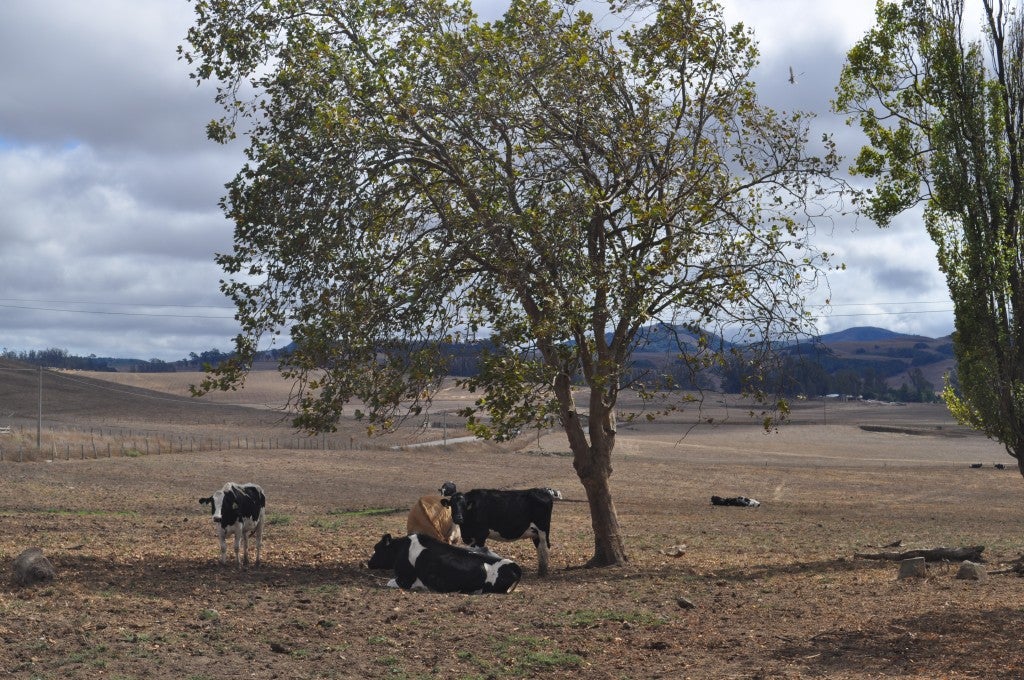I have had a long standing interest in omega-3 fatty acids. Increasing the intake of omega-3 fatty acids has been linked to beneficial health outcomes. Mammals cannot make omega-3 fatty acids, they must obtain them from their diet.
Milking mice
In fact, one of the first research projects I undertook when I started at UC Davis in 2002 was to produce genetically engineered mice (by adding an omega-3 desaturase gene) that could produce their own omega-3 fatty acids in their milk! Yes I have spent time milking mice – they have a lot of teats (10-12) compared to a cow (so this milking mice image is technically incorrect!).
When in 2004 I wrote a follow on grant to take my preliminary research in mice onto larger animals (i.e. cows), the grant was not funded with the reviewer’s comment being “Given the “pure and wholesome” public perception of milk products, it may be particularly difficult to gain widespread public acceptance for transgenic milk products – despite their health benefits.”
So began my decade plus of focusing my research on breeding methods other than genetic engineering. However, I still think that if cows could produce their own omega-3 fatty acids that would be a good thing for public health, and perhaps if the public sector had been able to obtain research funding to bring some of these consumer benefit traits to market then public acceptance of transgenic products might be different today.
But back to omega-3s in milk. Because cows cannot produce their own omega-3 fatty acids they must obtain them from their diet. And because cows are ruminants, almost all of the feed they consume is first “digested” by the microbes in their rumen. And bacteria love to derive energy by converting polyunsaturated fatty acids into saturated fatty acids (biohydrogenation).
Hence, ruminant products are relatively high in saturated fatty acids relative to single stomach animals who tend to more faithfully reflect the fatty acid composition of their diet. And one group that eat a lot of omega-3 fatty acids in their diet is oily fish, such as salmon, herring, mackerel, anchovies, menhaden, and sardines.
Like cows, fish do not synthesize omega-3 fatty acids; they obtain them from the plankton in their diets. Fish are a particularly valuable source of the long-chain omega-3 fatty acids (20:5 EPA and 22:6 DHA). Evidence supports a dietary recommendation of ≈ 0.5 g/d of EPA and DHA for cardiovascular disease risk reduction. As a result, the American Heart Association recommends eating fish (particularly fatty fish) at least two times (two servings) per week.
So is milk an important dietary source of omega-3 fatty acids? Not really. Not to criticize milk – it is valuable source of protein, Vitamin D, Riboflavin, Vitamin B12, Phosphorus and Calcium, and my kids drink a glass of pasteurized milk with every meal.
I am not a trained dietician, but as a Mom I do feed humans nutrients and therefore compare the nutritional content of foods. According to the USDA standard reference database, an eight fluid ounce cup (244 g) of 3.25% fat milk has 0.183 grams of omega-3s, most of it 18:3 (ALA). A half fillet serving (178 g) of salmon has 4.023 grams of omega-3s, most of it EPA and DHA. In other words I get more than 20 times the omega-3 fatty acids from a serving of salmon that I get from a glass of milk, and they are the long-chain varieties. And if the milk is non-fat or skim the amount goes down to 0.0049 grams of omega-3s, because – well they removed the fat!

Dairy cows on California drought-stricken pasture in Sonoma County in 2014
The omega-3 composition of milk can be influenced by the cow’s diet – if cows eat a diet high in omega-3 fatty acids, then a small fraction of them “bypass” biohydrogenation by the rumen microbes, and so make it to the true stomach. So feeding cows lush omega-3 rich green grass, rather than the drought-stricken pastures that have been on offer here in California for the past 4 years, is associated with a slight increase in omega-3 fatty acids. The high content of polyunsaturated fatty acids (especially ALA) in grasses at early stage of maturity is the main reason for the positive effects of pasture on the fatty acid composition of milk.
I should mention my husband (of 26 years as of today – Happy Anniversary!) is also a researcher at UC Davis, and he works in aquaculture. So we have had a surf and turf rivalry going on for more than a quarter century in our house. I think we only survived together so long because we recognize that different foods – four legs, two legs, no legs – all have their pros and cons! And little of each in moderation seems to be a recipe that my whole family can live with.